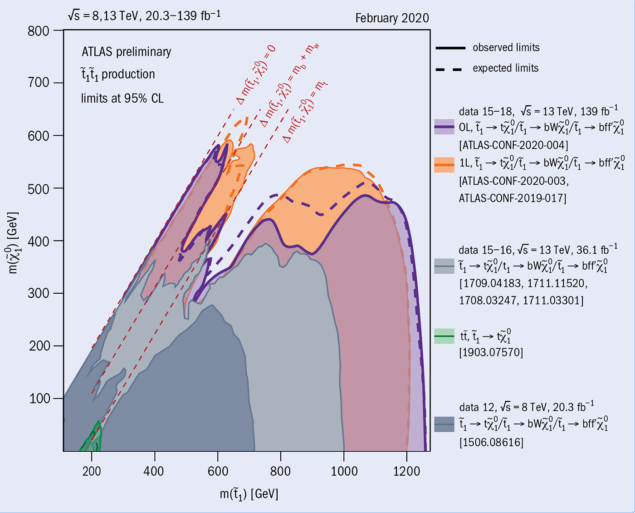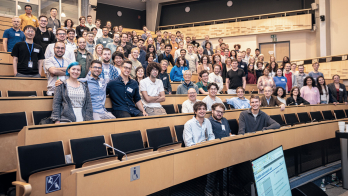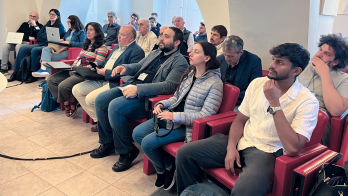A report from the ATLAS experiment

Supersymmetry is an attractive extension of the Standard Model, and aims to answer some of the most fundamental open questions in modern particle physics. For example: why is the Higgs boson so light? What is dark matter and how does it fit in with our understanding of the universe? Do electroweak and strong forces unify at smaller distances?
Supersymmetry predicts a new partner for each elementary particle, including the heaviest particle ever observed – the top quark. If the partner of the top quark (the top squark, or “stop”) were not too heavy, the quantum corrections to the Higgs boson mass would largely cancel, thereby stabilising its small value of 125 GeV. Moreover, the lightest supersymmetric particle (LSP) may be stable and weakly interacting, providing a dark-matter candidate. Signs of the top squark, and thus supersymmetry, may yet be lurking in the enormous number of proton–proton collisions provided by the LHC.
Two new searches
The ATLAS collaboration recently released two new searches, each looking to detect pairs of top squarks by exploring the full LHC dataset corresponding to an integrated luminosity of 139 fb–1 recorded during Run 2. Each top squark decays to a top quark and an LSP that escapes the detector without interacting. Thus, our experimental signature is an event that is energetically unbalanced, with two sets of top-quark remnants and a large amount of missing energy.
A challenge for such searches is that the masses of the supersymmetric particles are unknown, leaving a large range of possibilities to explore. Depending on the mass difference between the top squark and the LSP, the final decay products can be (very) soft or (very) energetic, calling for different reconstruction techniques and sparking the development of new approaches. For example, novel “soft b-tagging” techniques, based on either pure secondary-vertex information or jets built from tracks, were implemented for the first time in these analyses to extend the sensitivity to lower kinematic regimes. This allowed the searches to probe small top squark–LSP mass differences down to 5 GeV for the first time.
Leptoquark decays would exhibit a similar experimental signature to top-squark decays
Other sophisticated analysis strategies, including the use of machine-learning techniques, improved the discrimination between the signal and Standard-Model background and maximised the sensitivity of the analysis. Furthermore, these two searches are designed in such a way as to fully complement one another. Together they greatly extend the reach in the top squark mass versus LSP mass plane, including the challenging region where the top squark masses are very close to the top mass (figure 1). No evidence of new physics was found in any of these searches.
Beyond supersymmetry, these search results are intriguing for other new-physics scenarios. For example, the decay of a hypothetical top quark–neutrino hybrid, called a leptoquark, would exhibit a similar experimental signature to a top-squark decay. The results also constrain models predicting dark matter produced with a pair of top quarks that do not originate from supersymmetry.
Further reading
ATLAS Collaboration 2020 ATLAS-CONF-2020-004.
ATLAS Collaboration 2020 ATLAS-CONF-2020-003.
ATLAS Collaboration 2019 ATLAS-CONF-2019-017.








